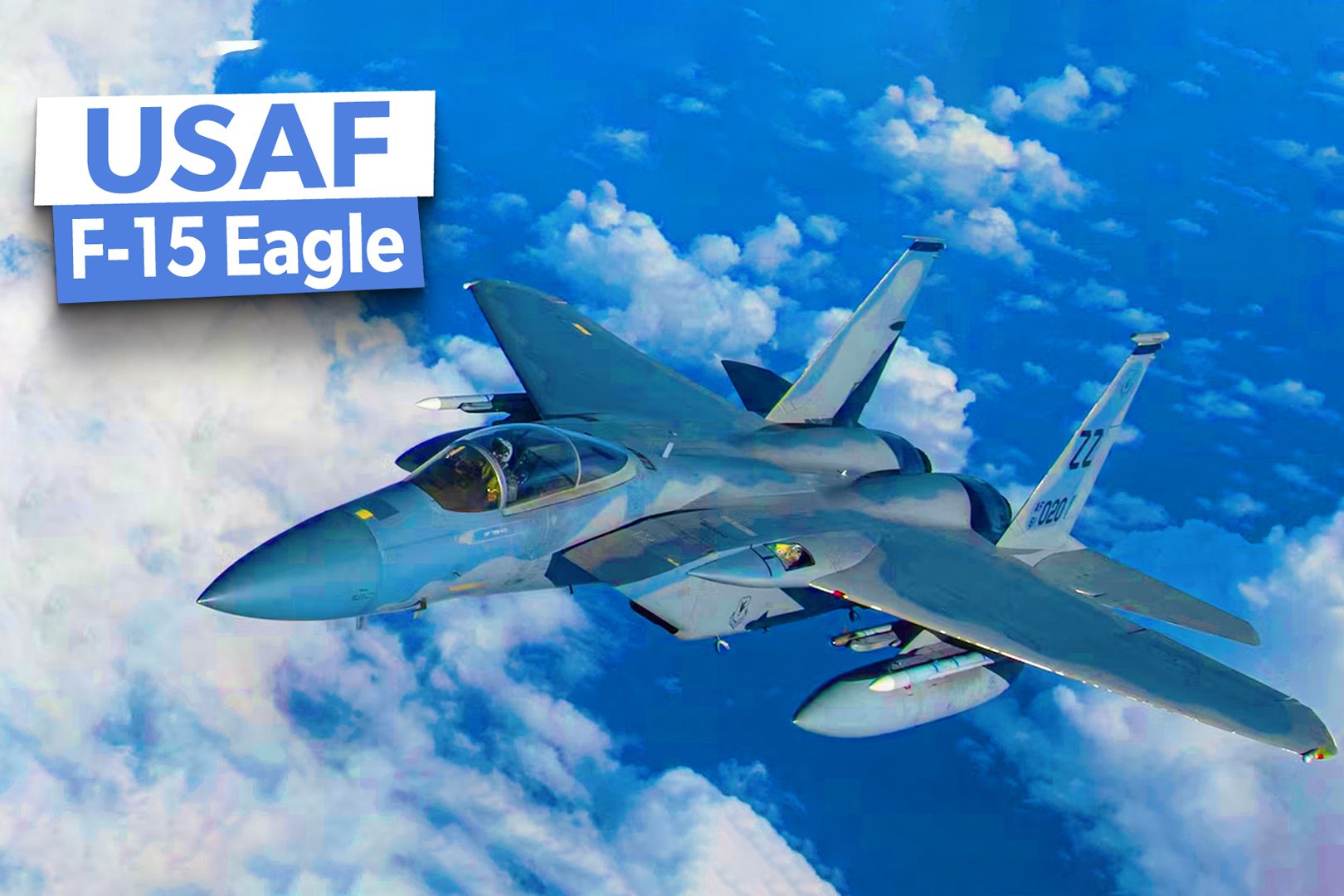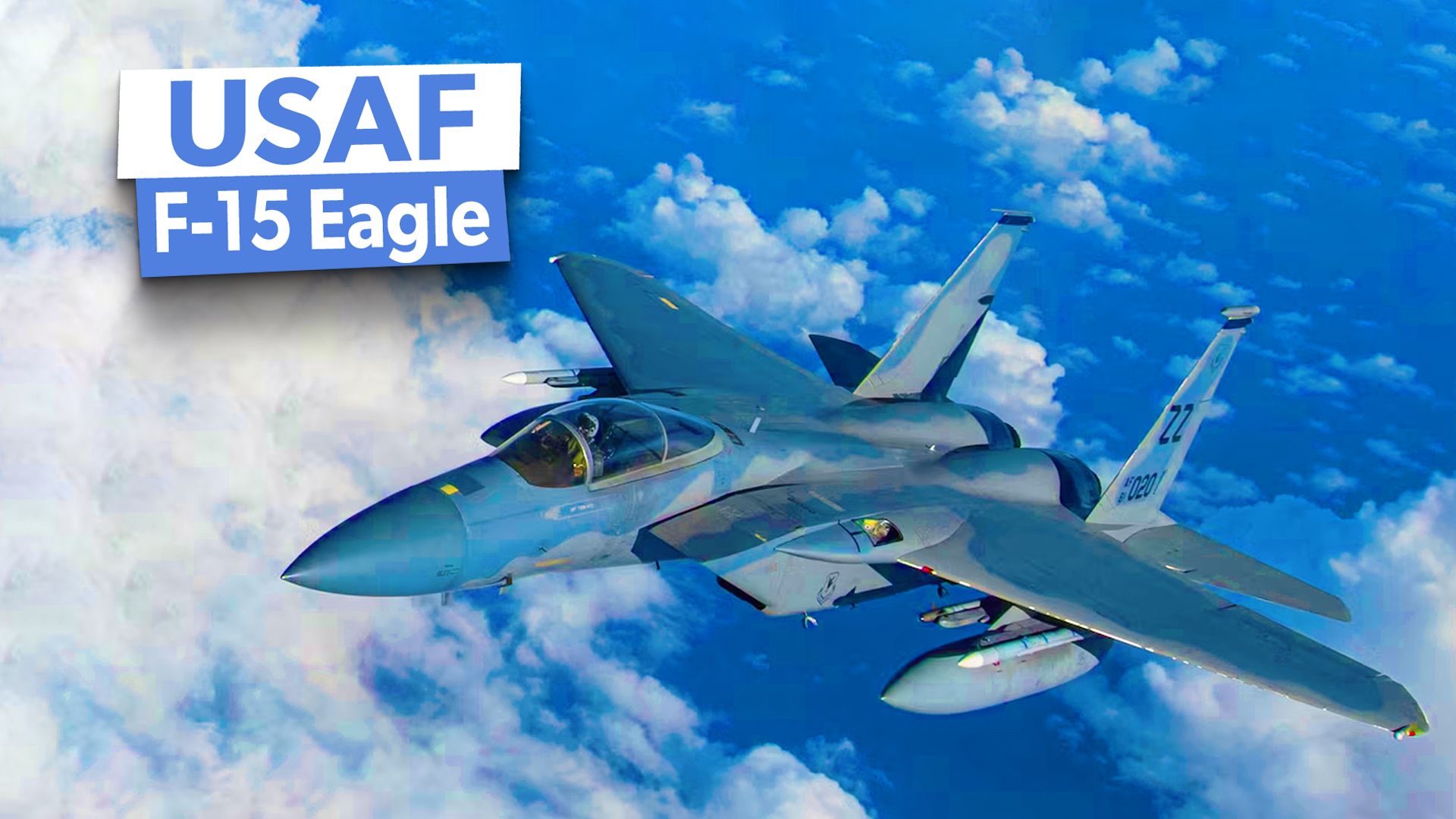
How many F-15s still fly today? The short answer is 428, according to the World Directory of Modern Military Aircraft (WDMMA) – last updated on January 5, 2024. But there’s more to the F-15’s role in the US Air Force than numbers alone.
Our dear loyal readers don’t tune into us for mere short, abrupt answers. With that in mind, we’ll now dive deeper into the numbers behind the USAF’s F-15 Eagle numbers.
F-15C
The standard single-seater air superiority fighter variant of the warbird was produced between 1979 and 1985 (for the basis of comparison, the original F-15A made its maiden flight on July 27, 1972, and entered official operational service with the USAF on January 8, 1976). WDMMA lists 210 F-15C airframes in the current USAF arsenal.
“Oh, I wish I had eight AMRAAMs like the Eagle
I’d be having so much fun. it’d be illegal
Like a guy who ain’t been laid for months, I’d shoot those f*ck*rs all at once
I wish I had eight AMRAAMs like the Eagle”
— “I Wish I Had A Gun Just Like The A-10” (verse 2) by Dos Gringos
This version of the Eagle has racked up the lion’s share of the plane’s unmatched 104:0 air-to-air kill ratio.
|
Fuselage Length: |
63 ft 9 in (19.43 m) |
|
Wingspan: |
42 ft 10 in (13.06 m) |
|
Height: |
18 ft 6 in (5.64 m) |
|
Empty Weight: |
28,000 lb (12,701 kg) |
|
Max Takeoff Weight: |
68,000 lb (30,844 kg) |
|
Powerplant: |
2 × Pratt & Whitney F100-PW-220 afterburning turbofans, 14,590 lbf (64.9 kN) thrust each dry, 23,770 lbf (105.7 kN) with afterburner |
|
Fuel Capacity: |
13,455 lb (6,103 kg) internal |
|
Max Airspeed: |
Mach 2.5 (1,650 mph, 2,655 km/h) at high altitude
|
|
Combat Range: |
1,061 NM (1,221 mi, 1,965 km) for interdiction mission |
|
g Limits: |
+9 |
|
Service Ceiling |
65,000 ft (20,000 m) |
|
Armament: |
|
F-15E Strike Eagle
The first of the two-seater versions—making its maiden flight on December 11, 1986, and officially entering USAF operational service on September 30, 1989—is unofficially and affectionately known as the “Mudhen.” WDMMA says the USAF currently has 218 of these aircraft in the fleet.
“Oh, I wish I had the gas just like the Mudhen
To hang around that long is just a sin
And while you RTB and scoff
I’m doing loops and j*ck*ng off
I wish I had the gas just like the Mudhen”
–Verse 3 of the previously cited Dos Gringos song
So, where exactly does that “Mudhen” nickname – which sounds nowhere near as intimidating or warrior-minded as “Strike Eagle” – come from? Giantbomb.com gives us the answer:
“It is affectionately known as the Mudhen, with Mud in reference to its air to ground role and darker color scheme and hen referencing its fat CFTs [conformal fuel tanks]. F-15C crews call the F-15E ‘the dark side’ and pilots that transition to the F-15E are ‘joining the dark side.'”.
Regarding that air-to-ground role, the Strike Eagle was first “blooded” in combat during the 1991 Persian Gulf War AKA Operation Desert Storm. To quote Giantbomb again:
“[I]t was arguably the unsung hero of the war. The F-15E was the most tasked airframe in the US Air Force during the conflict, with planes flying as many as three missions a day.”
Among the ground attack missions carried out by the F-15Es during Desert Storm was that of so-called “tank plinking,” i.e., carrying out precision strikes against then-Iraqi strongman Saddam Hussein’s T-55, T-62, and T-72 main battle tanks (MBTs). The Mudhen has one air-to-air kill to its credit, obtained on February 24 of that year: a Mil Mi-24 “Hind” helicopter destroyed with a laser-guided bomb. As described by the pilot in a 2021 article on Sandboxx:
“There was a big flash, and I could see pieces flying in different directions. It blew the helicopter to hell, damn near vaporized it.”
“Strike Eagle, Strike Eagle. they call me by name
I”ve bombed the hell out of Goldwater Range
I fly oe’r the mountains, I fly oe’r the sea
Ain’t no combat airplane as deadly as me”
–“Strike Eagle” by Dick Jonas, Lt. Col., USAF (Ret.)
|
Fuselage Length: |
63 ft 9.6 in (19.446 m) |
|
Wingspan: |
42 ft 9.6 in (13.045 m) |
|
Height: |
18 ft 6 in (5.64 m) |
|
Empty Weight: |
34,600 lb (15,694 kg) |
|
Max Takeoff Weight: |
81,000 lb (36,741 kg) |
|
Powerplant: |
12,915 lb (5,858 kg) internal, 22,267 lb (10,100 kg) with conformal fuel tanks (CFT), 34,162 lb (15,496 kg) with CFTs and 3 600-gallon (2,270 L) external fuel tanks |
|
Fuel Capacity: |
2 × Pratt & Whitney F100-PW-220 afterburning turbofan, 14,590 lbf (64.9 kN) thrust each dry, 23,770 lbf (105.7 kN) with afterburner (or 2 × F100-PW-229, thrust: 17,800 lb dry (79 kN); 29,160 lb (129.7 kN) with afterburner each) |
|
Max Airspeed: |
Mach 2.5, 1,650 mph (2,655 km/h) at high altitude Mach 1.2 / 800 kn (921 mph; 1,482 km/h) at low altitude |
|
Combat Range: |
687 NM (791 mi, 1,272 km) |
|
g Limits |
+9 |
|
Armament: |
|
But what about the F-15EX Eagle II?
The latest and greatest of the two-seater Eagle variants is the F-15EX Eagle II. According to WDMMA, they’re still on order, along with F-15Cs and Es, with a combined total of 144 airframes awaiting delivery. The Boeing F-15EX Eagle II achieved Initial Operational Capability (IOC) in July of this year, with eight units delivered at that point, as reported by the National Interest. Last December, two Boeing F-15EX Eagle II arrived at Eglin Air Force Base (AFB), Florida, joining two other F-15EXs previously delivered, with the first arriving in 2021.
“The aircraft have been used in ongoing tests on the all-weather multirole fighter, an advanced variant of the combat-proven F-15 Eagle that first entered service nearly five decades ago.”—The National Interest
|
Fuselage Length: |
63 ft 9.6 in (19.446 m) |
|
Wingspan: |
42 ft 9.6 in (13.045 m) |
|
Height: |
18 ft 6 in (5.64 m) |
|
Empty Weight: |
34,600 lb (15,694 kg) |
|
Max Takeoff Weight: |
81,000 lb (36,741 kg) |
|
Powerplant: |
2 × General Electric (G.E.) F110-GE-129 afterburning turbofan, 17,155 lbf (76.31 kN) thrust each dry, 29,500 lbf (131 kN) with afterburner |
|
Fuel Capacity: |
???? |
|
Max Airspeed: |
Mach 2.5, 1,650 mph (2,655 km/h) at high altitude Mach 1.2, 800 kn (921 mph; 1,482 km/h) at low altitude |
|
Combat Range: |
687 NM (791 mi, 1,272 km) |
|
g Limits: |
+9 |
|
Service Ceiling |
60,000 ft (18,000 m) |
|
Armament: |
|
